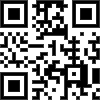MODELLING OF PROFESSIONAL SITUATIONS AS THE MAIN CONDITION OF DEVELOPMENT OF COMMUNICATIVE COMPETENCE
DOI:
https://doi.org/10.30888/2415-7538.2021-21-01-014Keywords:
Key words: modeling of professional situations, students, case study, creative thinking, communication, education.Abstract
The article is devoted to one of the actual problems of modeling of real professional situations. During the investigation, we have determined that this is one of the most important pedagogical technology of development of communicative competence. ModelMetrics
References
Dychkivska, I.M (2004). Innovative pedagogical technologies: educators. K: Academic Edition.
Ellis, R. and Ann McClintock,, (1990) You Take My Meaning: Theory into Practice in Human Communication. London: Edward Arnold ., № 71.
Gotting. V.V. (2008). Preparation of the teacher of professional training on the basis of the competence approach. Materials of the international scientific and practical conference “Innovations and training of scientific personnel of the highest qualification in the Republic of Belarus and abroad”. Minsk: State Educational Institution “BelISA”.
Honan, James P.( 2002) . Using cases in higher education: a guide for faculty and administrators. John Wiley and Sons, USA.
Larionova, O. (2005). Competence – the basis of contextual learning. Higher. education in Russia, pp 118-122.
Lyvkivskyi, M. (2004). Educational innovative technologies in the process of teaching disciplines. Zhytomyr: Osvita. pp 49-55.
Morrison, Keith R.B. (2003). – Fifth edition. – Great Britain. : Routledge.
Prokopenko I. F. (2005). Pedagogical technologies: textbook. Benefit. I.F. Prokopenko, I. Evdokimov. - M .: Collegium,
Shannon, C. and Warren Weaver. (1999) The Mathematical Theory of Communication (Urbana, IL: University of Illinois Press), p. 16.
Tykhomirov, O.K. (1984). Psychology of thinking. Moscow: Izd-vo MGU
Verbitskyi A.A. (1991). Active learning in higher education: contextual approach: method. Verbitskyi A.A. - M .: Higher. sch.
Shannon, C. and Warren Weaver, (1949). The Mathematical Theory of Communication (Urbana, IL: University of Illinois Press ), p.16.
Published
How to Cite
Issue
Section
License
Copyright (c) 2021 Authors

This work is licensed under a Creative Commons Attribution 4.0 International License.






